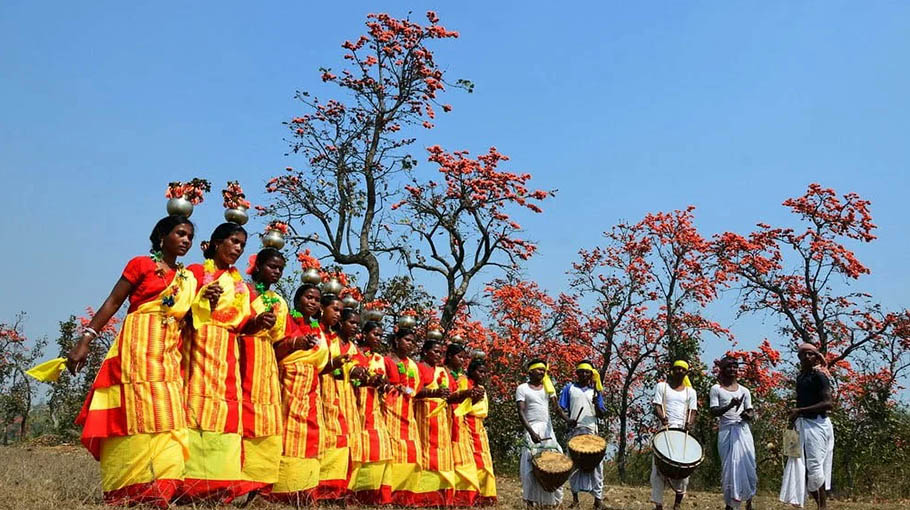Preserving the rich tapestry of indigenous cultures in Bangladesh and globally

In an ever-globalizing world where the homogenization of culture often seems inevitable, the preservation of indigenous cultures stands as a beacon of diversity, heritage, and richness that must be protected and cherished. Bangladesh, a country renowned for its vibrant culture and history, is home to a multitude of indigenous communities whose unique traditions, languages, and lifestyles are integral to the national identity and global heritage. The protection and promotion of these indigenous cultures are not only vital for the communities themselves but also for the broader global society, which benefits immensely from the diversity and wisdom these cultures offer.
Indigenous cultures in Bangladesh, such as those of the Chakma, Marma, Garo and other indigenous communities, are distinguished by their rich traditions, languages, and customs. Each community contributes uniquely to the cultural mosaic of the nation. For instance, the Chakma community, primarily residing in the Chittagong Hill Tracts, is known for its distinctive language, which belongs to the Indo-Aryan family, and its elaborate weaving techniques that produce exquisite textiles. Similarly, the Marma community, with its roots in Burmese traditions, offers a fascinating blend of cultural practices that include unique festivals, dances, and culinary traditions. The Garo people, predominantly residing in the Mymensingh region, bring to the fore a rich tapestry of oral traditions, music, and dance that are crucial elements of Bangladesh's cultural heritage.
Language is a cornerstone of cultural identity, and the languages of indigenous communities are rich repositories of history, knowledge, and worldview. In Bangladesh, indigenous languages are a living testament to the country's multiculturalism. Efforts to preserve and promote these languages are crucial. The incorporation of indigenous languages into the national education curriculum and the establishment of cultural preservation programs can significantly contribute to this cause. Additionally, documenting and digitizing these languages can ensure that they are accessible to future generations and scholars worldwide, thus preventing their extinction.
Culinary traditions are another vital aspect of indigenous cultures. The food habits of indigenous communities in Bangladesh reflect their deep connection to the land and their sustainable way of life. Indigenous cuisines, often based on locally sourced, organic ingredients, offer valuable insights into sustainable living and nutrition. For example, the traditional foods of the Chakma and Marma communities, which include a variety of vegetables, fish, and rice-based dishes, are not only delicious but also nutritionally balanced and eco-friendly. Promoting these culinary traditions can enhance food diversity and provide healthier, more sustainable food options for all.
Beyond Bangladesh, the protection of indigenous cultures is a global imperative. Indigenous communities worldwide, from the Maori in New Zealand to the Native Americans in the United States, face similar challenges of cultural erosion, language loss, and marginalization. However, they also offer immense contributions to global culture and knowledge. Indigenous knowledge systems, particularly in environmental conservation and sustainable living, are invaluable assets in addressing contemporary global challenges such as climate change and biodiversity loss.
Global efforts to protect indigenous cultures must focus on recognizing and upholding the rights of indigenous peoples. This includes ensuring their right to land, self-determination, and the preservation of their cultural heritage. International frameworks like the United Nations Declaration on the Rights of Indigenous Peoples (UNDRIP) provide a robust foundation for these efforts. Countries around the world must commit to implementing these frameworks, promoting inclusive policies, and fostering environments where indigenous cultures can thrive.
In addition to policy measures, fostering greater awareness and appreciation of indigenous cultures is crucial. Educational initiatives, cultural exchanges, and media representation play significant roles in this regard. Highlighting the achievements and contributions of indigenous communities in various fields, from arts and sciences to environmental stewardship, can help combat stereotypes and foster a greater understanding and respect for these cultures.
The role of technology in preserving and promoting indigenous cultures cannot be overstated. Digital platforms offer unprecedented opportunities for documenting, sharing, and revitalizing indigenous languages, traditions, and knowledge. For instance, digital archives, online language courses, and virtual cultural exhibitions can make indigenous heritage accessible to a global audience. Moreover, social media can serve as a powerful tool for indigenous communities to share their stories, connect with each other, and mobilize support for their causes.
The protection of indigenous cultures in Bangladesh and globally is not just about preserving the past; it is about enriching the present and future. These cultures offer unique perspectives, wisdom, and innovations that can inspire and benefit all of humanity. By safeguarding the cultural heritage of indigenous communities, we honor the diversity and resilience that define our world. It is a collective responsibility that demands commitment, action, and respect for the enduring legacy of indigenous peoples.
Sheikh Mehzabin Chitra is a University Correspondent of Shahjalal University of Science and Technology (SUST), Bangladesh Post and a final year honours student of Anthropology Department of the institution




